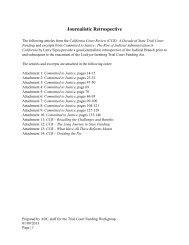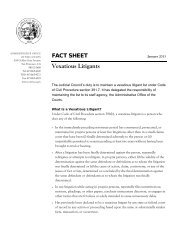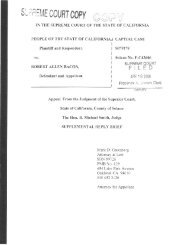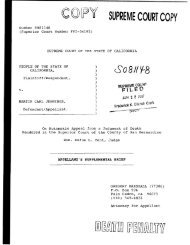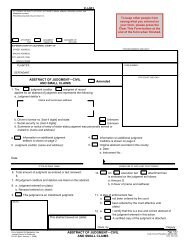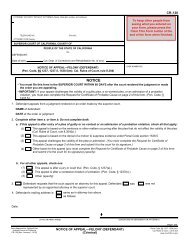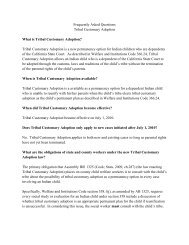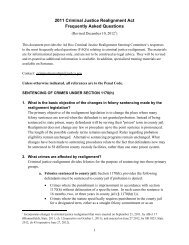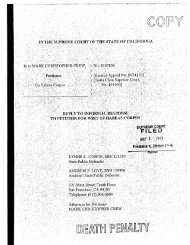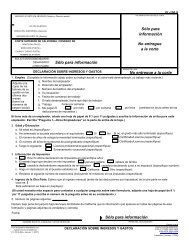Appellant, William Satele, Reply Brief - California Courts - State of ...
Appellant, William Satele, Reply Brief - California Courts - State of ...
Appellant, William Satele, Reply Brief - California Courts - State of ...
You also want an ePaper? Increase the reach of your titles
YUMPU automatically turns print PDFs into web optimized ePapers that Google loves.
Unless this incident can be traced to racial animosity, it has no relevance.<br />
<strong>Appellant</strong> was allegedly involved in an altercation with an Asian inmate, and there<br />
were no racial epitaphs spoken or other evidence <strong>of</strong> a racial motive as to the<br />
incident in issue here. Therefore, it was mere speculation to attribute a racial<br />
motive in this particular altercation to appellant. (See AOB at p. 194.)<br />
Because Evidence Code section 352 requires a balancing <strong>of</strong> the probative<br />
value <strong>of</strong> the evidence against its prejudicial effect, respondent's failure to address<br />
the actual probative value <strong>of</strong> the evidence dooms his argument. Respondent's<br />
conclusion that the evidence was necessary to rebut appellant's defense evidence<br />
that he was not hostile to African-Americans is necessarily flawed because half <strong>of</strong><br />
the equation - the probative nature - was never analyzed.<br />
Respondent argues that appellant was not prejudiced by this evidence<br />
because he had been charged with killing people in a drive-by shooting, an act<br />
more violent than the alleged assault. (RB at p. 129.) However, the fact that the<br />
alleged crime was more egregious than the improper character evidence does not<br />
negate the fact that a jury may be prejudiced by the evidence in question. The<br />
jury's job was to determine whether appellant committed the murders.<br />
Presumably, at the time the improper evidence was introduced, the jurors had not<br />
made up their minds about the charged <strong>of</strong>fense. The assault evidence created an<br />
image <strong>of</strong> appellant as a violent racist. The inferences drawn by the jurors from<br />
such evidence influenced the jurors to conclude that it was more likely that<br />
appellant committed the murder than they would have been had the evidence not<br />
been introduced. Therefore, the fact that the murder was more serious than the<br />
character evidence did not negate the prejudicial impact <strong>of</strong>that evidence.<br />
In conclusion, the erroneous introduction <strong>of</strong> this evidence was prejudicial t<br />
appellant, thereby requiring a reversal <strong>of</strong> the judgment <strong>of</strong> conviction entered<br />
below.<br />
98



